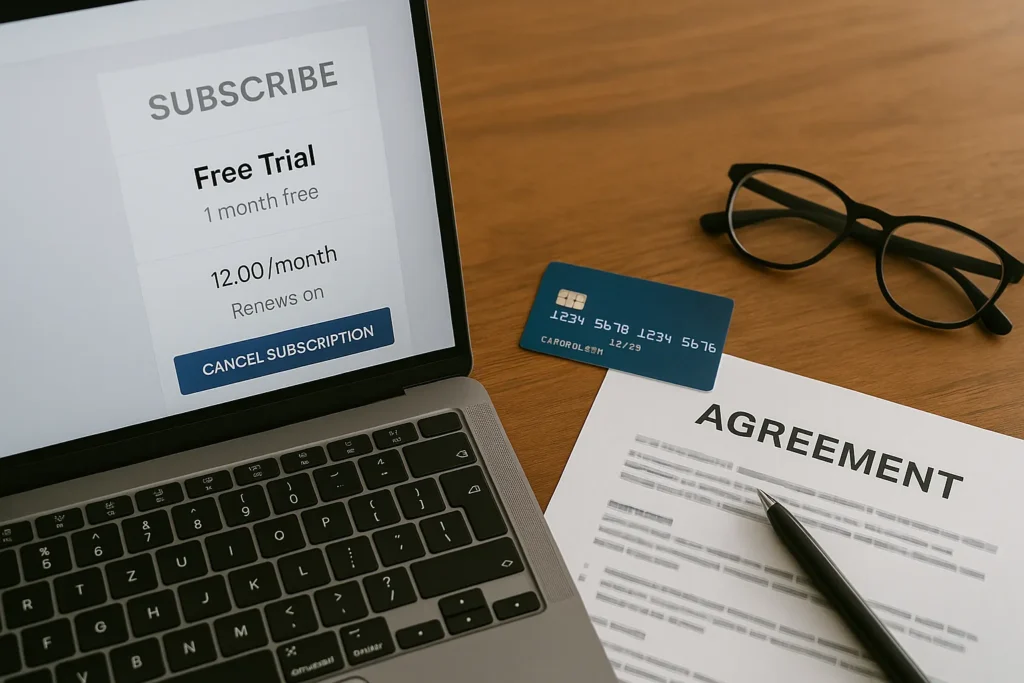Ever added something to your cart thinking, “Great deal!” only to see the total balloon at checkout? Suddenly, your $40 item is $58. Where did that extra $18 come from?
Welcome to the world of hidden shopping fees.
These sneaky charges catch many of us off guard. It’s frustrating and can feel unfair.
But luckily you can avoid these hidden fees with a few practical tips and learning where and why they tend to appear. That way, you can stop these charges before you checkout.
This article will break down where these fees hide, why they happen, and how to shop online with assurance and control.
First, let’s take a moment to understand exactly what these hidden fees are and why they’re so common in online shopping.
What Are Hidden Shopping Fees?
Hidden shopping fees are extra charges added to your order during checkout that were not clearly shown upfront. They make a product seem cheaper at first, then inflate the final cost just before you pay.
These fees are often used by retailers to make prices appear more attractive while still recovering costs.
You might be familiar with a few of these hidden shopping fees:
- Shipping costs that only appear after you’ve entered your address.
- Vague handling or “order processing” fees are added at checkout.
- Restocking fees that are charged to you for returning an item.
- Free trials that quietly turn into paid subscriptions.
- Surprise charges from currency conversion or overseas transaction fees.
What makes these fees especially frustrating is how hard they are to spot until the very end. That’s on purpose. Retailers use a trick called “drip pricing,” where fees appear little by little during checkout. By the time you see the full cost, you’re already invested in the purchase.
The 7 Most Common Hidden Fees in Online Shopping

Hidden fees are just part of how online shopping works. They’re usually small, so it’s easy to miss them, but they can add up over time, especially if you shop a lot or during big sales.
Here’s what they look like:
1. Shipping Costs That Change Based on Location or Method
Many stores advertise free or cheap, but that can change depending on your postcode, how you choose to ship, or when you place your order. For example, express delivery might be added to your cart by default, even if you saw standard shipping at first. Some sellers also charge extra for remote or regional areas, even in Australia.
2. Ambiguous Handling or “Order Processing” Fees
These fees are usually flat charges that apply no matter what you buy or where you live. Such as an electronics store might add a $4.95 “processing fee” to every order, no matter the size or price. They’re rarely explained, and you can’t usually skip them, so you end up paying for something you didn’t ask for or fully understand.
3. Return or Restocking Fees That Cut Into Refunds
More and more retailers are charging customers just for returning items, especially bigger products or clothes. You might have to pay 15% of the item’s price as a restocking fee, even if you never used it. These rules are often tucked away in return policies that most people don’t take the time to read.
4. Auto-Renewals From Free Trials or Promotional Offers
Some products or services offer free trials that turn into paid subscriptions without a reminder. For instance, a $1 sign-up for a streaming service might become a $14.99 monthly charge after just a week. Canceling can be tricky, too, with instructions hidden in menus or only available by calling support.
5. Foreign Currency and Cross-Border Charges
Even if you’re shopping on a “.com.au” site, you can still get caught out if the store is actually based overseas. You might end up paying in US dollars without noticing, and then your bank adds a foreign transaction fee, usually around 2-3%, plus currency conversion costs. These extra charges don’t show up on your receipt but will appear on your card statement later.
6. Platform or Service Fees Disguised as System Costs
These kinds of charges are common on sites like eBay, Eventbrite, or through third-party sellers. They often show up as “platform fees” or “booking charges” and are usually a percentage of your order. A $50 concert ticket might come with a $6 “processing fee” that wasn’t shown at the start, making the total higher without really adding anything extra.
7. Add-Ons That Are Automatically Selected
Some stores automatically add extras like delivery insurance, gift wrapping, or extended warranties to your cart. If you don’t spot them and remove them yourself, you’ll end up paying for things you didn’t choose. This happens a lot with electronics and household items.
These fees are meant to be easy to miss until they show up on your bill. But once you know what to watch for and understand what the terms mean, it’s much easier to avoid them.
Let’s take a look at how you can stay ahead of these fees and avoid surprise charges at checkout.
Practical Online Shopping Tips to Avoid Extra Charges

The best way to deal with hidden fees is to stop them before they happen. That means keeping an eye out for things like surprise shipping costs, sneaky add-ons, or free trials that turn into paid subscriptions. These ideas are meant to make online shopping easier and help you avoid sneaky fees wherever you’re buying from.
Check the Final Order Summary, Line by Line
Before you click “Pay Now,” take a moment to check the whole checkout screen. This is usually where extra charges show up at the last minute. It could be things like delivery upgrades, small fees for packaging, or optional extras that are already selected for you. Spending just 10 extra seconds here can save you from surprises later.
Install Browser Extensions That Flag Added Costs
Tools like Honey, Coupert, or Capital One Shopping can spot when you’re being charged more than usual. Some extensions alert you if a better total price is available elsewhere, including shipping and taxes. Others track price history so you can tell if a discount is genuine or just clever marketing.
Compare the Total Cost, Not Just the Product Price
An item priced at $25 could cost you $38 once delivery fees and taxes are added. Meanwhile, another store might sell the same item for $30 with everything included. Using tools like PriceHipster or comparison sites that show the full checkout price can help you find the best deal.
Study Return Policies Closely
Even honest-sounding policies can include expensive conditions. Some “free return” offers only apply to store credit. Others might require items to be returned unopened or within tight timeframes. Always check for restocking fees or restrictions hidden in fine print.
Avoid Auto-Renewal Traps Disguised as Free Trials
Trial periods often hide short expiry windows like seven or fourteen days. Some companies delay sending welcome emails or billing notices, hoping you will forget. Use a calendar app to set alerts before the trial ends so you can cancel on time.
Stick With Local Retailers or Recognised Platforms
Since not every “.com.au” site is Australian-owned, it’s a good idea to look for local support contacts or confirm the ABN. Buying within Australia helps avoid extra bank fees and makes dealing with issues less complicated.
Use Virtual Cards or Controlled Payment Accounts
Banks and financial apps like Wise or Revolut let you generate virtual cards that can be paused or deleted. You can also set low limits to protect yourself from unexpected charges. These are especially helpful when signing up for trial offers or shopping from unfamiliar websites.
Online shopping should be easy and safe. With these simple habits, you can keep control of your purchases and avoid paying for things you didn’t agree to.
But even with all these tips, you might be wondering: should these hidden fees be allowed in the first place?
Let’s take a look at what the law actually says about them and whether anything is being done to hold retailers accountable.
Are Hidden Fees Allowed? Legal Insights for Shoppers

Hidden fees exist in a legal grey area. They’re not always against the law, but they often walk a fine line between poor transparency and outright deception. Around the world, regulators are stepping in to demand clearer pricing and better protections for consumers.
Here’s what you need to know about your rights and how the law is changing:
California bans drip pricing
This law means businesses can’t advertise one price and then surprise you with extra mandatory fees later. Instead, all the costs you have to pay must be shown upfront in the price you see.
Misleading prices breach Australian law
The ACCC (Australian Competition and Consumer Commission) makes sure businesses follow the rules on clear pricing. If a company hides important costs until checkout, it might be breaking the law, even if those fees are mentioned somewhere else.
“Junk fees” under global review
This term covers fees that are often unnecessary, not clearly explained, or don’t really add value. Regulators in Australia, the US, and the UK are working to stop these charges and make pricing clearer for everyone.
Marketplaces may face stricter rules
Governments are looking into rules that would make marketplaces and comparison sites show the full price, including fees, right from the start.
You can report hidden fees
If you think a store is hiding fees or not being clear about the total price, you can make a complaint with the ACCC or your local consumer affairs office. This helps keep businesses honest and encourages fairer practices for everyone.
The more you know about the rules, the easier it is to shop with confidence and demand clear, upfront prices.
But legal changes aren’t the only thing driving change. Shoppers like you are also helping shape the future of online transparency. Let’s see how the industry is reacting and what’s on the way.
The Future of Transparent Online Shopping
Online shoppers are no longer staying quiet about unfair fees. Growing frustration has fuelled consumer backlash, and retailers are starting to take notice. Transparency is becoming a competitive edge for businesses that want to earn trust and loyalty.
Here are some examples of how online shoppers are helping with transparency:
Clear Pricing Becomes a Selling Point
More brands are now advertising “no hidden fees” on their homepages and product pages. For example, Australian retailer The Iconic clearly shows all delivery charges upfront and promotes easy returns without surprise deductions.
This openness appeals to buyers who are tired of checkout surprises. It’s also a response to increasing cart abandonment, which often occurs when unexpected fees appear too late in the process.
Technology Is Leading the Way
Online platforms are integrating features to make total costs more visible earlier in the purchase journey. Travel booking sites like Booking.com now include taxes and fees in the initial price for many listings, after facing criticism for misleading pricing.
Tools like PriceHipster and browser extensions such as Honey or Capital One Shopping also help consumers compare complete prices. Some apps even flag when “free shipping” claims don’t hold up under closer inspection.
Consumer Pressure Is Driving Change
People sharing their complaints on social media and review sites are making companies rethink how they set prices. A clear example is when customers spoke up about Ticketmaster’s high service fees that sometimes doubled the price of concert tickets.
The backlash was strong enough to catch the attention of U.S. lawmakers and sparked talks about changing the rules. Here in Australia, sites like ProductReview.com.au let shoppers share their experiences with retailers who sneak in extra fees, helping others shop smarter.
Every choice you make matters. When you take the time to read the fine print, say no to extra add-ons, or leave a review about clear pricing, you’re helping push for change. Businesses pay attention to this feedback and often adjust to avoid bad reviews.
Protect Yourself from Hidden Fees Every Time
Online shopping is great. What really trips you up are the hidden fees and surprise charges. But now, you’re better equipped to deal with them.
Now you know what to watch for. Extra shipping costs, vague handling fees, sneaky subscription traps, and hidden international charges are some of the most common culprits.
No matter if it’s inflated shipping, misleading trials, or foreign transaction costs, you’ve seen how these fees appear and how to avoid getting caught.
Take a few extra moments to review every line, question anything that doesn’t add up, and walk away if it doesn’t feel right. There’s no harm in clicking off a deal that isn’t truly fair.
Every time you skip a hidden fee or report a tricky charge, you protect your wallet and help make online shopping fairer for everyone.
